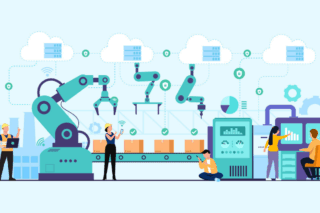What conditions require the implementation of an industrial additive manufacturing (AM) system? Which is the best 3D system? 3D printing specialist Andrew Wheeler explains for DirectIndustry e-magazine how companies can get started with 3D manufacturing.
According to the Wohlers Report 2015, the 3D printing industry is expected to grow 31% per year between 2014 and 2020, generating $21 billion in worldwide revenue. Wohlers notes that 2014 global revenue was $4.1 billion. Based on these figures, the forecast for 2016 is about $7.1 billion. Manufacturers are looking for new technology to give them an edge. Whether it’s more realistic prototypes to impress clients or a faster-paced prototyping process, highly customized, low-production-run parts, as well as tools, molds and fixtures are becoming staples in the evolving industrial landscape. All these aspects are driving interest in 3D printing.
But before choosing the right system, for many companies the first question is, How to get started?
1. Choosing The Right Scenario
Replacing traditional methods with 3D printing can quite literally be a game changer for expanding the lineup of products an industrial manufacturer can offer. Databases and consulting companies have made the incorporation of 3D printing at various points along the supply chain both streamlined and effective. A young startup founded by two Wharton School graduates created Senvol in 2014. The company’s database/search tool enables manufacturers to cut through the clutter of the industrial 3D printing sector. They’ve offered their work to the public at no cost, like a highly specialized Wikipedia.

Senvol describes 7 scenarios in which 3D manufacturing can be beneficial enough to consider implementation:
♦ When specific parts are built in low volume or have high fixed costs associated with them;
♦ When special parts have long lead times, or manufacturers want to get new products into the marketplace more quickly;
♦ When high inventory storage costs favor smaller batches produced on demand;
♦ To reduce the leverage that suppliers hold over manufacturers by creating an alternative source for critical parts;
♦ When time-sensitive parts are needed in remote locations requiring expensive shipping costs;
♦ When high import and export costs eat into profits for simple parts;
♦ To boost performance.
2. Opting For an Industrial AM Database
Senvol’s searchable database has been widely copied since. The Senvol database is a free site with a customizable search tool created to help determine which parts could be replaced cost-effectively with 3D printed materials. Users can search everything from the type of material to size, tensile strength and price. For Zach Simkin, Co-President of Senvol:
The key is to find the intersection between what is mechanically viable (i.e., what can the technology do) and what is economically viable (i.e., what is cost-effective to implement). Only when both the mechanical and economic criteria are met should a company adopt additive manufacturing.
3. Following Training Programs
Numerous training programs also have popped up to educate clients about everything from process, implementation and benefits, to quality control, safety and design. The one offered by the Digital Fabrication branch of UL Industries stands out because of the company’s history of providing safety certification, which requires navigating through highly regulated industries. This means that the training they provide for 3D printing software, material, printers and process techniques for jewelry, plumbing and medical applications should be up to code regardless of facility.
4. Do it In-House or Outsource?
Should you purchase a printer of your own or send out your designs for manufacture? Since a given machine is limited in what it can produce, the most important factor is what you will be printing. If it is metal, you’ll have to further narrow down what type of machine will work best—powder bed, blown powder, binder jetting or hybrid AM/CNC. If it is plastic, you must consider whether your prints will serve only as models and prototypes, or functional parts requiring standardized material properties. If your needs are simple and unlikely to change dramatically, then a printer of your own may be the best option.
Individual service providers like Stratasys Direct can help you explore industrial AM and get a sense of the fixed costs and additional risks that come with implementing an in-house system.












